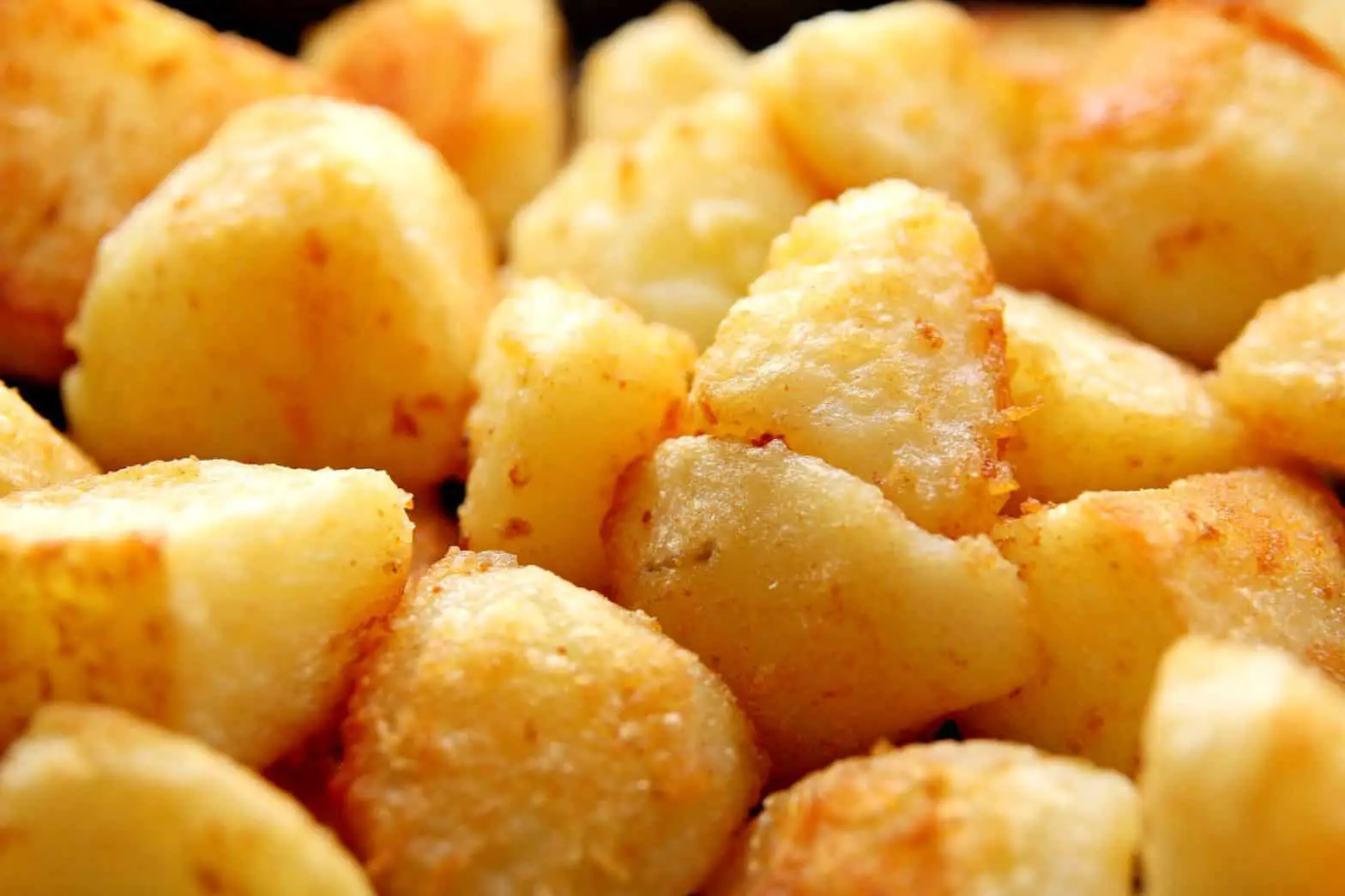Table of Contents
If you’re looking for a new microwave, make sure the model you purchase offers the wattage you need. Everyone needs a microwave, but each family has different cooking habits and preferences. We’ll show you how to find the best wattage for microwave ovens, countertop models, and everything in between.
*This post may contain affiliate links. As an Amazon Associate we earn from qualifying purchases.
Why is the Wattage of a Microwave Important?
The wattage (W) is the universal measurement for electrical power, and the number explains the operating power capacity of the electrical appliance in question.
When it comes to microwaves, the wattage number is shown along the inside of the door or on the microwave’s face. You may also see the wattage listed on the features or specs listing for a microwave. Basically, the microwave’s wattage is based on the magnetron size and level of electric current induced when the unit is powered on. This determines how fast the microwave cooks.
The higher the wattage, the more powerful the microwave will be, and the quicker the appliance performs. A higher wattage microwave can cook food more evenly as well. Understanding the wattage of your microwave unit is important so you can cook your food thoroughly, without struggling through trial and error.
For the best results, you should select a microwave with a wattage level that aligns with your desired performance or cook time:

Image via Pixabay
- 1,000 watts – 4:03 cook time
- 1,200 watts – 3:10 cook time
- 1,800 watts – 2:40 cook time
Also, if you live in a dorm room, you may need to pay particular attention to the wattage of your microwave. Most dorms restrict the wattage that’s allowed in the building.
To see the most popular microwaves just click here.
What’s the Best Wattage for Microwaves?
Microwaves on the market today, no matter what type, range in wattage from between 500 to 1,250 watts. Smaller microwaves typically offer less power, while the bigger microwaves are suited to a family’s needs. The larger, more expensive models often come with a higher wattage. However, you pay more for a larger sized microwave and more cooking performance.
Recent manufacturers have adopted Europe’s standard test to rate the wattage of their microwaves, which may result in a higher number than the United States’ test standards. Keep this in mind when looking at microwave ovens, as the models won’t actually cook your food faster.
You can expect a 700-watt microwave to boil a cup of water in around 2 and a half minutes. A 1,000-watt or 1,200-watt option is the best for most people’s needs, however. It’s enough power to heat or defrost anything from the freezer section thoroughly. Cheaper microwaves with under 700-watts take longer to cook your food efficiently and may struggle to heat things evenly.
A difference of around 100 watts, however, doesn’t make much difference between microwaves.
What’s the Best Wattage for My Needs?
The right microwave for you depends on how you use it. While some people use their microwave for nearly every meal, others only use it to pop popcorn for movie nights sometimes. Whether you use your microwave frequently or not, there is an option that’s best for you.
The lowest wattage, 500 watts, is not great for cooking food. Rather, people use these compact, low power options to dehydrate food or quickly heat a beverage. It’s best for a person who lightly uses the microwave on occasion. These microwaves won’t come with tons of features to cook different foods or other sensors to boost the results, and they tend to cost much less as well.
With an option between 600-800 watts, you can steam or fry foods, heat a frozen dinner, and cook small foods. Heating beverages like tea and coffee are better at this range as well. Most recipes are written for microwaves with at least 800 watts of power to ensure the food cooks all the way through. Many households enjoy a microwave in this range.
The wattage for you may be determined based on your cooking needs and preferences as well. If you want to cook chicken, make popcorn, boil rice, or cook a small desert thoroughly, you need closer to 1,000 watts. With a wattage this high, you should use the setting features for each type of food to help cook each adequately.

Image via Pixabay
Any model with over 1,000 watts is close to an over, perfect for people who cook full meals in microwaves and ovens. They’re also ideal for large families. If you like to experiment with different cooking methods or tend to prepare large meals at once, top models with updated safety features and innovations may be helpful to you. Casserole dishes tend to fit better in a larger, 1,000-watt option.
Finally, the microwave for you may be based on the size of your family. A larger, powerful microwave is often ideal for huge families. While a family of four is typically found with an average full-size model, a single or couple may only need a mid-size or compact option depending on how often you use the appliance.
Best Wattage for Microwave Types
With a wide variety of microwave types, designs, and sizes available, each unit offers a different wattage. Explore the common wattage options available for each type of microwave on the market today below to find the best option for your needs.
Countertop Microwaves
Countertop microwaves, as the name suggests, sit on a kitchen counter. This is the most affordable and widely accessible option in microwaves, with most options starting around $20. Although they come in a wide range of sizes, they are often found in either compact, mid-size, or full-size models. The size correlates with the interior cubic feet space or cook space of the microwave, and the compact models tend to come with lower wattages.
The best wattage for microwave options with a traditional countertop design may come down to the size you buy:

Image via Pixabay
- Small (0.4-0.5 cubic feet) – 600 to 950 watts
- Mid-size (0.5-0.8 cubic feet) – 800 to 1,200 watts
- Large (0.7-1.5 cubic feet) – 900 to 1,250 watts
A smaller option with under 1,000 watts of power is considered a light-duty commercial microwave, which is better for people who tend to use their microwave infrequently. Medium-sized options of around 1,200 watts of power increase the wattage to speed up your cook time. You can use these options up to 150 times each day.
Over-the-Range Microwaves
Although they come in many sizes, most over-the-range microwaves are around 1.6 cubic feet or bigger. Expect to fit a 15″ baking dish inside easily. This type of microwave frees up counter space by calling for installation above the stove in place of an oven hood. They tend to offer ventilation systems due to their placement, and they make cooking easy. Expect your over-the-range microwave to come in 0.6-1.5 cubic feet and offer between 850 and 1,100 watts of power.
Drawer Microwaves
A model designed to free up the kitchen counter, a drawer microwave comes in many sizes as well. You pull the appliance out from the kitchen cabinet when you’re ready to use it, and many short people love this type of microwave because they’re easily accessible. You can stir your food mid-cook time without even removing the dish from the microwave. Built-in models, such as drawer microwaves, can range in size from 0.9-1.1 cubic feet and offer 950 to 1,100 watts.

Image via Pexels
Convection Microwaves
A smaller version of an oven, a convection microwave is also called a microwave oven because they pack in nuking power. It’s a great option for people who entertain often and want a smaller option to use while the main, larger oven takes on another job. On the flip side, people who don’t cook often also enjoy the versatility to use the unit as an oven or microwave. Convection microwaves tend to offer the highest wattage options.
How to Match a Different Wattage Microwave than Your Needs
If you’re following a recipe that calls for a microwave with a different wattage than your model contains, you need to adjust the cooking time appropriately. Match directions for a lower microwave wattage by diving your desired wattage by your microwave’s wattage. Then, shift the decimal point two spaces to the right to find the percentage of power needed. For example, if your recipe calls for 600 watts of power and your microwave has 1,000 watts, set your machine to 60% to cook accurately.
On the other hand, if the recipe calls for a wattage generated by a much more powerful microwave than you have to offer, you’ll need to adjust the cooking time instead. Adding around ten seconds per minute of cook time for every 100 watts of power you’re lacking should do the trick. Therefore, a recipe that calls for two minutes of cook time in a 1,200-watt unit on full power takes 2 minutes and 20 seconds in a lower 1,000-watt microwave.
A Final Word
The best wattage for microwave options your family considers depends on how you cook, how big your family is, and how often you use the appliance. Consider your needs to find the perfect amount of power. Bigger isn’t always better if you only use the microwave to pop popcorn for a movie night once in a while, for instance.
Featured photo via Pexels

